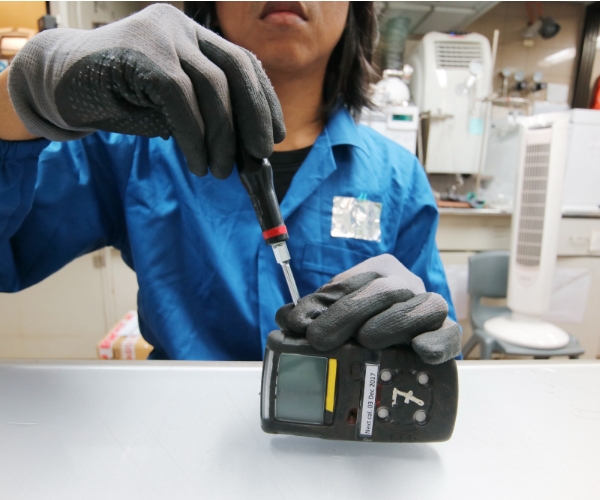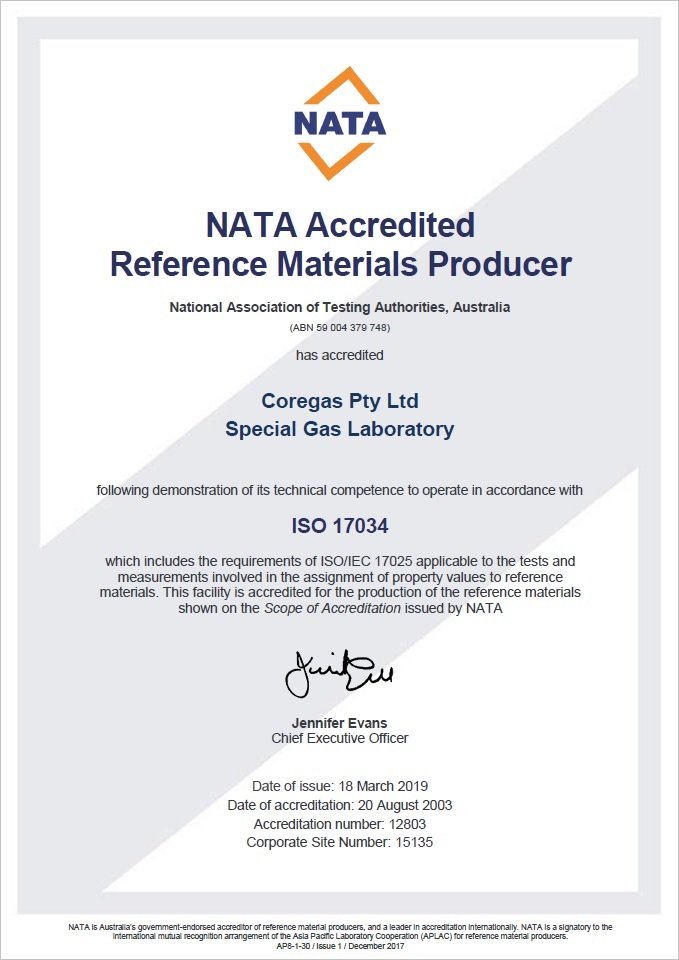Browse our selection of related journal articles, data sheets, brochures and more...
Specialty Gases and Equipment brochure
Download
When working around flammable, inert or toxic gases, or in confined space, gas detection devices are used for safety. These detectors require testing and calibration with specialty gases mixtures.
Gas detectors are used in underground mines to test for oxygen deficiency, accumulation of flammable methane gas and the presence of toxic gases such as hydrogen sulphide, nitric oxide and carbon monoxide. They are also used in surface operations, especially where chemicals such as ammonia or cyanide are being used as refrigerant gases for ventilation chillers or processing agents.
Gas detectors are generally portable devices worn by the miners as they move through the mine. They require a functionality test (or bump test) at the pit head before use, generally at the beginning of each shift. This is a basic test using a specialty gas mixture to determine that the sensors, electronics and alarms in the gas detector are all functioning. Given the harsh and dusty environment that the detectors are exposed to this test is essential to demonstrate that the miner will indeed be protected during their work underground.
In addition to a frequent bump test gas detectors must also be calibrated regularly. The interval between calibration can be between 3 months and one year. This process takes place in a controlled laboratory environment and uses very high quality specialty gases calibration mixtures. The most reliable way to conduct this test is to use ISO 17034-certified accredited reference material gases with the required components at the same concentrations that the gas detector is designed to produce an alarm.

In hydrocarbon processing, gas detection is essential. A range of flammable gases are often present and some toxic gases such as are hydrogen sulphide may also present a hazard. The gas detection equipment in chemicals plants is often fixed in locations where it is perceived that a leak might be most likely, for example over a valve or near a compressor. Portable equipment, similar to that used in mining, is also common, as well as gas leak detection cameras.
When entering storage tanks for maintenance or cleaning the operator will be working in a confined space where the free flow of air might not be possible. It is possible that the space may contains residual vapour from various chemicals that were previously stored in the tank or nitrogen gas from purging activity. In any case, gas detection hazardous area gas detection PPE should be worn to give notice of any gas risks and it is also often the case that breathing apparatus will be work where pure clean air is provided to the operator through pipes and into a breathing mask.
The local availability of functional test gas mixtures is generally high. Many major industrial and specialty gas suppliers around the world are able to produce cylinder gases for this purpose because the certification and accreditation requirements are relatively straight forward. The availability of accredited ISO 17034 calibration gas mixtures is, on the other hand, not such a simple matter. And the issue becomes more complex when the gas mixture should contain corrosive gases, such as hydrogen sulphide, or a number of different gases be present in the same cylinder, as is called for when calibrating gas detectors that are fitted with multiple sensors for use in the mining industry.
The high level of sophistication associated with the production of these metrological reference materials means that gas cylinders must often be sourced from overseas from one of the few worldwide locations where they can be produced. One such specialty gases supplier is Coregas, perhaps not surprising given the extremely high level of mining activity that takes place in Austria. Victor Chim, Business Development Manager at Coregas commented, “our pedigree has grown from serving our mining customers in Australia. We have been working very closely with them and with the national accreditation body NATA for many years to develop a range of ISO 17034 calibration gas mixtures that can be used as reference materials for gas detector sensor calibration.” The Australian National Association of Testing Authorities (NATA) are one of the foremost accreditation authorities worldwide and are widely considered to be the leading authority in the Asia Pacific region. Chim continues, “in recent years, our reputation and our specialty gas cylinders have been travelling abroad and we are proud to be a supplier to many multi-national gas detection device manufacturers and local gas detection device servicing companies overseas.”
When calibrating gas detectors with multiple sensors, it is most convenient to use gas mixtures with multiple components. From a metrological point of view, this is also the most robust way to calibrate the detector because each sensor is exposed to the full cocktail of gases that might be present in the underground air and thereby any cross-interferences will be observed.
Blending multiple components together in a single gas cylinder saves the laboratory service technician the time of switching between multiple cylinders of binary mixtures. Victor Chim again: “we push the envelope of innovation as far as safety and science will allow. So we will blend components together if they neither explode in the cylinder nor react. For example, this limits the amount of methane that we can add to a gas detector mixture and it is most common to include methane up to 50% of the lower explosive limit (LEL). Higher concentrations are possible, but require highly specialised gas mixture preparation techniques.”
Detonations inside the cylinder are not the only technical limitation. Chim continues, “reaction chemistry also must be considered. For example some detectors are now built with multiple sensors to sniff for H2S and SO2 together. We would be delighted to offer our customers a gas mixture containing both of these components but the laws of nature would prevent it: the combination of this reducing agent and oxidising agent would quickly result in a reaction to form elemental sulphur and water.” The solution in cases like this is to provide separate calibration gas mixture cylinders, one containing the SO2 and a separate one with the H2S.

Browse our selection of related journal articles, data sheets, brochures and more...